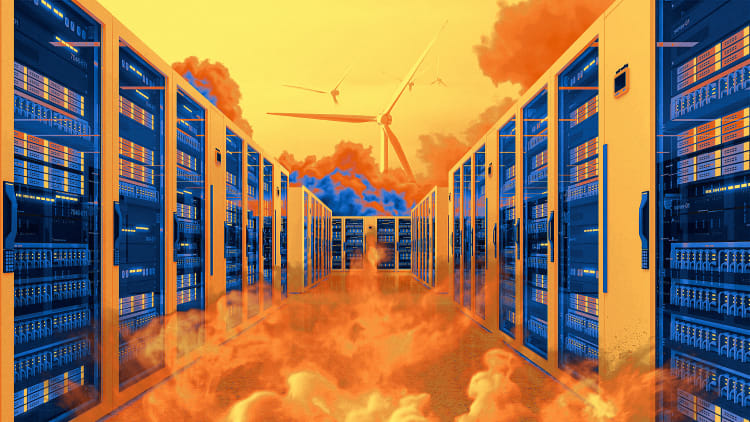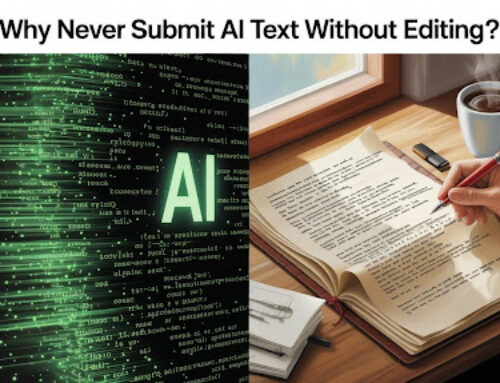Ever wondered how artificial intelligence (AI) is changing the way we generate, store, and consume energy? With the growing demand for clean and efficient power, AI is stepping up to help manage energy systems in ways we couldn’t imagine just a few years ago. AI power consumption in energy management has introduced new methods that are helping scientists, engineers, and communities make better use of energy. Let’s dive into some of the latest trends and applications in AI-driven energy solutions.

Role of AI in Energy Management
In today’s world, AI in energy management is truly transforming the way we approach and handle our energy needs. With the integration of AI algorithms into the energy industry, managing energy is becoming not only smarter but also more efficient. AI in the energy sector helps in optimizing energy production and controlling energy costs, allowing energy providers to offer clean and sustainable energy more effectively. AI solutions are enhancing grid management, predicting energy demand, and even supporting energy infrastructure to make sure that power is distributed where it’s needed most, reducing waste and lowering overall costs. This is where the real potential of AI shines, as it allows for proactive energy solutions instead of just reactive measures.
On a broader scale, AI for energy management is empowering energy companies and energy providers to streamline operations and improve sustainability. Through advanced AI technologies, these companies can better monitor and manage their energy resources. Applications of AI in energy management include tools that analyze patterns in energy demand, predict the best times for energy production, and manage energy systems for reliability. This is where AI systems play a major role in maintaining a stable energy supply. As more AI technologies are being developed, the potential impact on the energy sector continues to grow, setting the stage for a future where clean energy is more accessible, affordable, and reliable.
What are the Latest AI Trends in Nuclear Fusion Research?
AI is playing a transformative role in nuclear fusion research, especially in managing the complex challenges of controlling plasma, which is essential for fusion reactions. Plasma, a super-heated state of matter, is crucial for fusion energy, but keeping it stable within reactors is extremely challenging.
Here’s what Daniel Vasilevski, Director and Owner of Bright Force Electrical, says about this trend:
“One of the ways AI is being used in nuclear fusion right now is in controlling and stabilizing plasma. Fusion needs plasma to be super stable and contained, which is incredibly difficult because it’s basically a super-hot soup of charged particles. AI models have been trained to analyze the behavior of plasma in real-time, helping to adjust the magnetic fields that contain it. This is helping researchers get closer to making fusion a stable and consistent energy source. It’s still early days, but the potential is huge, especially when you think about how fusion could create a near-unlimited energy source.”
Adding to this, Paul DeMott, Chief Technology Officer at Helium SEO, explains another significant AI application:
“AI is playing an increasingly critical role in advancing nuclear fusion research, particularly in optimizing plasma control and improving simulation accuracy. One of the most exciting trends is using AI-driven algorithms to predict and prevent disruptions in the plasma, which is a significant challenge in maintaining stable fusion reactions. By analyzing vast datasets from fusion experiments, AI models can help scientists tweak variables in real-time, creating more stable plasma states. There’s also growing interest in using machine learning for accelerating the design of fusion reactors, cutting down on the time it takes to test and validate new configurations.”
How is AI Being Applied to Next-Gen Energy Storage Systems?
Energy storage is essential for integrating renewable energy sources like solar and wind into the grid, and AI is improving the efficiency and lifespan of next-gen energy storage solutions. With AI, we can monitor and predict the performance of storage systems, helping to avoid unexpected failures and optimize energy use.
Here’s what Daniel Vasilevski says on this topic:
“AI is playing a big role in improving battery performance, especially with systems like flow batteries and solid-state batteries that could become the future of energy storage. One example is how AI is being used to predict battery degradation. By analyzing patterns in charge and discharge cycles, AI can spot early signs that a battery is wearing out. This means energy storage systems can be maintained better, and you can replace or repair parts before they fail. It’s very useful for grid-scale batteries that need to stay reliable over time. AI can even help with optimizing when and how these batteries should charge and discharge, making sure they store energy during low-demand times and release it when demand peaks.”
Paul DeMott also shares his insights on the advancements in energy storage:
“AI is making substantial contributions to next-gen energy storage, especially in the areas of battery optimization and predictive maintenance. For example, AI models can analyze data from thousands of charging cycles to predict battery degradation and suggest ways to extend battery life. In newer storage technologies like solid-state batteries or even hydrogen storage, AI helps improve energy efficiency by optimizing how these systems operate under different conditions. Beyond that, AI can monitor and predict storage demand, enabling better integration with renewable energy sources like wind and solar, making energy storage smarter and more responsive to grid needs.”
Are There Any Recent Breakthroughs Where AI Models Have Improved Grid management and security?
With the increase in cyber threats, securing energy grids is more crucial than ever, and AI in energy management is proving to be an invaluable tool. AI algorithms are being developed to detect and prevent cyberattacks on power grids, keeping these essential networks safe.
Daniel Vasilevski highlights this area:
“Definitely. One area where AI has made a big impact recently is in detecting and preventing cyberattacks on power grids. Grids are increasingly connected, which makes them vulnerable to attacks that can cause serious disruptions. AI can analyze network traffic patterns to detect unusual activities that might indicate a cyber threat. It can spot anomalies way faster than traditional methods, allowing operators to respond quickly before things escalate. It’s almost like having a guard dog for your network that never sleeps. This is becoming even more important as grids start integrating more renewable energy sources, which makes them more complex to manage.”
Paul DeMott adds to this by sharing recent advancements:
“Yes, there have been some significant advancements. AI is increasingly being deployed to detect cybersecurity threats in real-time by monitoring grid infrastructure for abnormal behavior. For instance, machine learning algorithms can analyze network traffic and energy flow patterns to detect potential attacks or malfunctions before they cause major damage. AI is also being used to model grid vulnerabilities and run simulations of different attack scenarios, allowing operators to shore up weak points in the system. A notable recent breakthrough is the application of AI in automating responses to these threats, reducing the time it takes to neutralize them.”
What New AI Frameworks are Emerging to Support Sustainable Energy Consumption?
As we move towards more sustainable energy models, AI frameworks are emerging that help make energy usage more efficient. These frameworks are focused on optimizing energy use in homes, businesses, and even cities.
Daniel Vasilevski mentions how AI is helping build localized grids:
“AI is being used to create more localized energy grids or microgrids. These are smaller grids that can operate independently but connect to the main grid when needed. AI balances the supply and demand within these microgrids, especially when there’s a lot of renewable energy involved, like solar or wind. It predicts when production will be high and adjusts energy distribution accordingly, reducing waste. It’s making the dream of local, self-sustaining communities a bit more realistic. This is a big deal because it means we’re not just dependent on large-scale power plants—energy can be managed closer to where it’s consumed, which could change the way neighborhoods and even small towns manage their power.”
Paul DeMott highlights another emerging framework in demand response management:
“Several new AI frameworks are emerging that focus on promoting sustainable energy consumption. One of the key developments is the integration of AI with smart grids, where real-time data from IoT devices is used to optimize energy usage in homes, businesses, and across cities. AI-powered energy management systems can adjust energy consumption dynamically based on grid demand and availability of renewable energy sources, helping reduce carbon footprints. Another framework is in demand response management, where AI algorithms help coordinate energy use by automatically shifting non-essential loads to off-peak hours, ensuring a more sustainable balance between supply and demand.”
The Role of Artificial Intelligence in Balancing Demand and Supply in Energy Sector
One key area where AI in energy management is making a huge impact is in balancing the delicate line between energy demand and energy generation. With the increasing use of artificial intelligence, energy providers can now accurately predict energy needs in real-time, helping to avoid energy wastage and optimize production. AI enhances the efficiency of energy management systems by allowing for demand response management, where power usage can be adjusted based on peak or low-demand times. This flexibility is especially important with the integration of renewable energy sources, as AI can support the balance needed when energy supply from sources like wind or solar may vary. By implementing AI, companies are achieving sustainable and resilient energy systems, ensuring resources are used where and when they’re most needed.
Here’s how AI applications are actively transforming this balance:
- Smart grid management: Using AI, energy providers can track and predict patterns to manage the grid effectively.
- Maximize energy efficiency: AI models help in reducing waste by analyzing and adjusting energy production.
- Distributed energy resources: AI in energy management can help efficiently distribute energy across various networks and sources.
- Efficient energy usage: AI can help companies save costs by managing when and how they consume energy.
Moreover, AI algorithms can predict the energy landscape more accurately, even in challenging conditions. While the deployment of AI in this sector does come with its challenges, such as handling the high data demands of smart grid management and understanding the energy prices needed to meet demand, the overall benefits are clear. AI can also assist in making energy management not just more responsive but also more adaptable to the dynamic needs of modern infrastructure.

Challenges and Risks of Using AI in Energy Management
While AI in energy management offers incredible potential, it also comes with unique challenges and risks that need careful consideration. One of the primary concerns is the accuracy of energy demand forecasting. AI enhances the efficiency of energy systems, but unexpected fluctuations in renewable energy production can still disrupt even the most advanced AI algorithms. This can lead to gaps between energy supply and demand. As AI systems are designed to predict and respond to demand shifts, any error in prediction can result in energy wastage or supply shortages. Additionally, with the rising demand for energy, the need for accurate and responsive AI is becoming more critical than ever.
Integration of AI Technologies and Data Security
Another key challenge is the integration of AI technologies into existing energy systems, especially as these systems become more reliant on real-time data. To optimize energy consumption in real-time and reduce energy consumption, AI needs vast amounts of data, which raises concerns about cybersecurity and data privacy. A breach in the system could impact the reliability of energy supplies, creating risks not only for companies but for consumers as well. AI in energy management is critical in managing these complexities, but the use of energy resources in an efficient and secure manner remains a balancing act.
Balancing Clean Energy and AI’s Role
With the transition to renewable energy, technologies like AI in energy management are crucial to handling the unpredictable nature of resources like wind and solar. AI can improve the reliability of energy from renewable sources by forecasting fluctuations in renewable energy and aligning them with demand. However, maintaining accuracy across all energy storage systems to optimize energy production requires robust systems and constant updates to advanced AI algorithms. While AI can ensure a more efficient energy landscape, managing these technologies poses both technical and operational challenges.
Opportunities for AI in Maximizing Energy Efficiency
Despite the risks, there are many opportunities for AI to make a significant contribution to energy efficiency. As more renewable energy generation sources come online, AI in energy management will help ensure that energy systems can adapt quickly to shifts in supply and demand. The integration of AI technologies also presents an opportunity for reduction in energy wastage and improved energy demand forecasting, paving the way for a more efficient energy landscape in the future.
